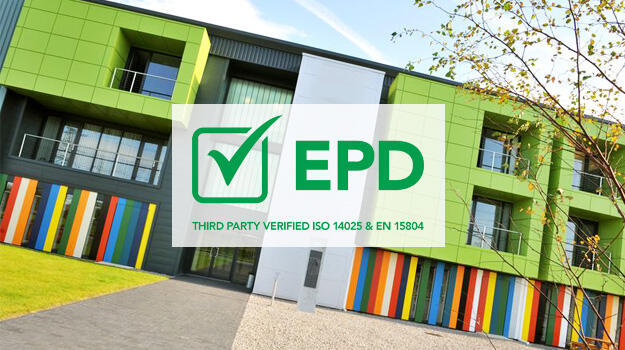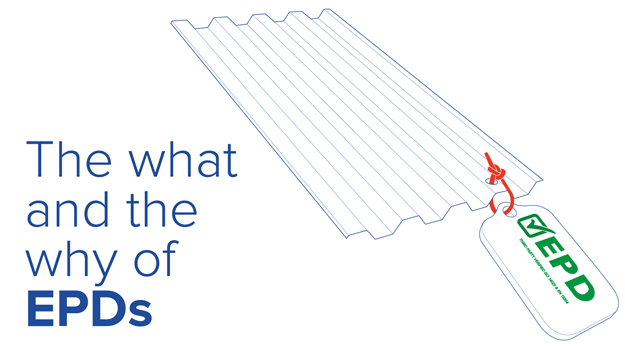The attributes of steel make it well suited to circular economic use and highly sustainable. It’s durable, flexible, adaptable in use, and at end-of-life.

In today’s construction industry, the focus on the environmental impact of a building and its materials is greater than ever. The attributes of steel make it well suited to circular economic use and highly sustainable. It’s durable, flexible, adaptable in use, and at end-of-life. But how do we show the sustainability of the products in a building and the impact they have on the environment? This is where Environmental Product Declarations (EPD’s) come in.
What is an EPD?
An EPD is a standardized way of determining the environmental impact of a product or a system. It allows you to see the impact associated with the sourcing, production and the delivery of a product on our environment. And it captures the scenarios of what will happen with building products when a building is at the end of its life.
EPD’s have many benefits and there are a range of reasons why you may want to use an EPD:
- EPD’s are useful in vendor qualifications. (For example: To build evidence of a responsible supply chain).
- EPD’s help developers or owners of buildings accrue points under building certification schemes such as BREEAM and LEED.
- EPD’s can help to provide valuable information for infrastructure projects that require Environmental Assessments in the planning stages (such as in the UK under the Town and Planning Act (2017).
How EPD’s are produced
EPD’s are based upon Life Cycle Assessments (LCA) of a product or system. An LCA is an ‘audit’ of the environmental impact of a product through its life cycle (from raw materials extraction, through production and transport and the ‘use phase’ to the end of its life). Sometimes, EPD’s are not able to record the impact of the ‘use’ phase of a product's lifecycle, due to the variation in use of a product.
An LCA is used as a basis to generate an EPD. The LCA is produced using data related to the manufacture of a product, such as the resources that are used and the waste/emissions that are generated. This is combined with data associated with the transport of the product and disposal, at the end of its life.
There are various international standards that are associated with the production of EPD’s. And there are various requirements for an EPD to meet those standards including how the EPD is produced and what information the EPD contains. EPD’s vary in format but the information contained within an EPD’s generally consist of:
- A description of the product
- Technical data and product specification
- Manufacturing description
- LCA methodology
- The results of LCA, including an interpretation of those results
- Impact data (carbon emissions, water use, etc.)
There are different types of EPD’s. Some EPD’s can be generic and include multiple supply chains for a given product. There are also product specific EPD’s, these tend to be more valued by building certification schemes such as BREEAM and LEED, and clients, due to their increased accuracy and specificity. Typically, to contribute to the maximum number of points within building certification, EPD’s need to be externally verified by qualified third parties and need to be product specific. All of Tata Steels EPD’s are externally verified and comply with international standards.
Tata Steel and EPDs
Tata Steel is world’s first steel company to operate an Environmental Declaration Programme to ISO standards, with the goal to deliver clear reporting of its steel-based products and to show the sustainability of steel through the lifecycle. This means that we can produce EPDs for construction products for any manufacturer. It is clear that we can deliver EPDs, but that is not the only thing we want to achieve. We are aiming to increase the transparency and accuracy of EPD reporting. To achieve this we have developed a number of EPD tools which are able to produce EPDs based on a client’s specific scope of work and specification. And we are also working closely with our supply chain partners, to use our programme to produce their own EPDs. This ensures that the same accurate life-cycle data is used and passed down the supply chain. This improves overall transparency in construction supply chains. Which not only makes the environment sustainable, it also makes the business more sustainable.












































































































































































